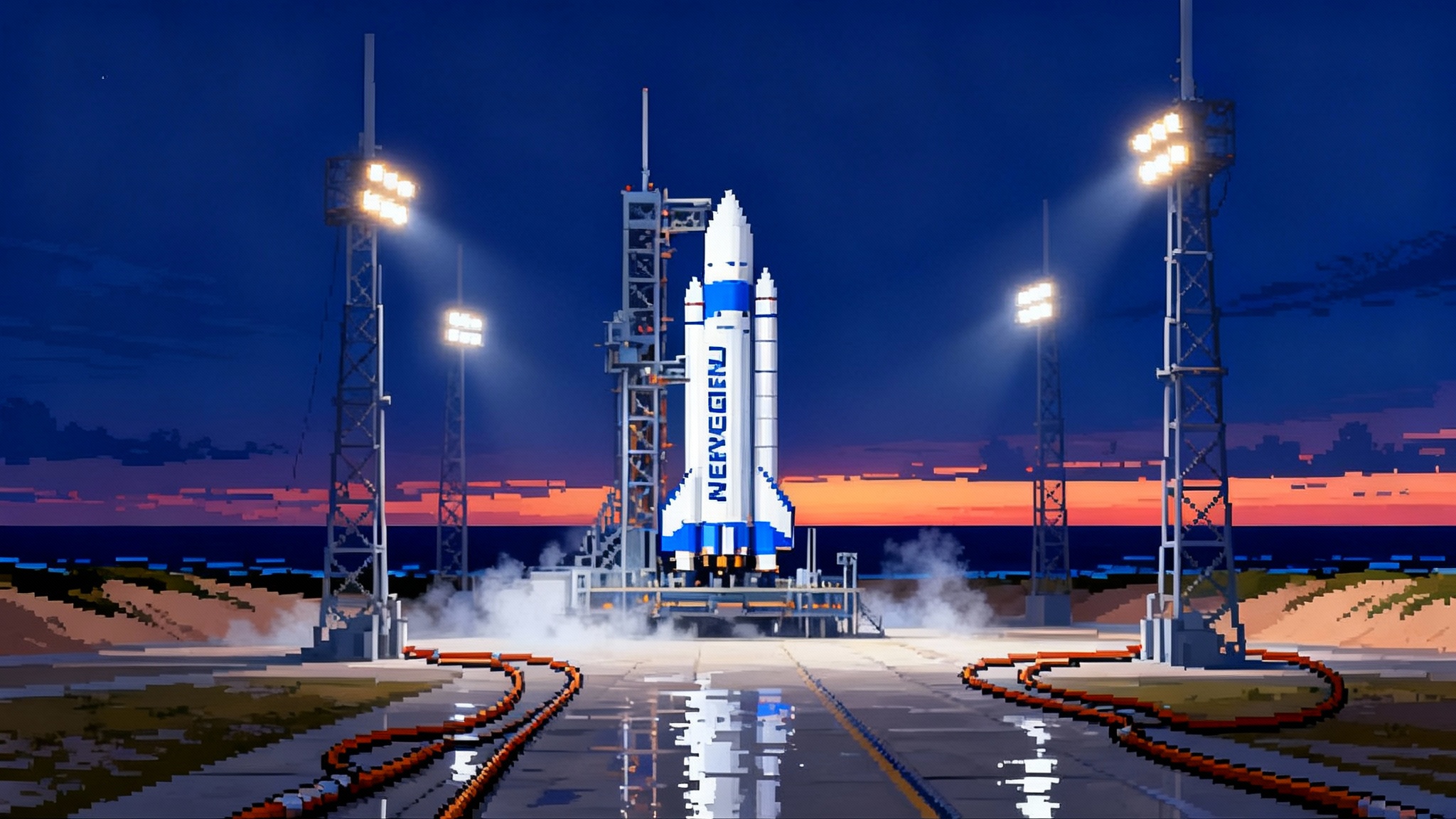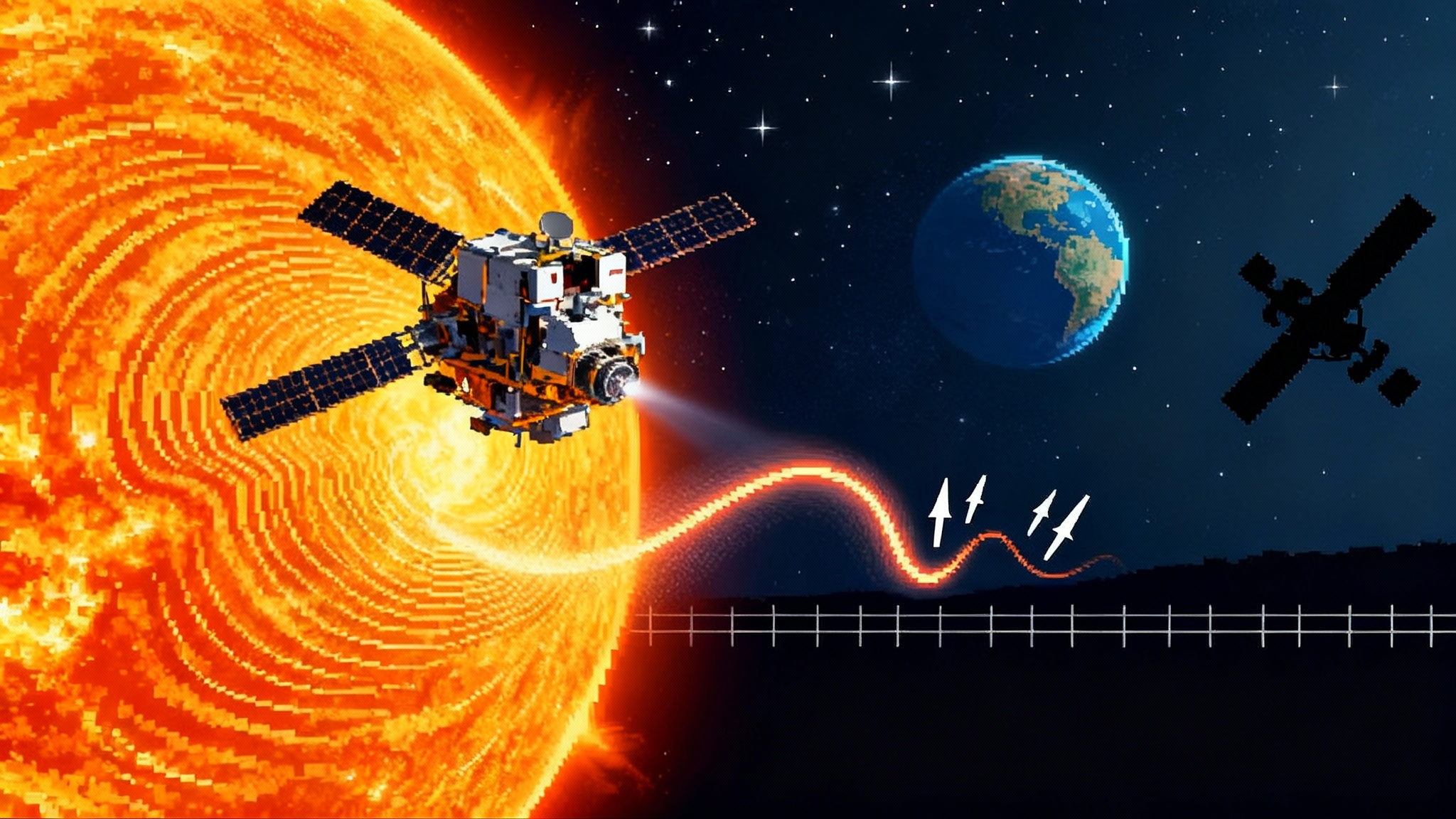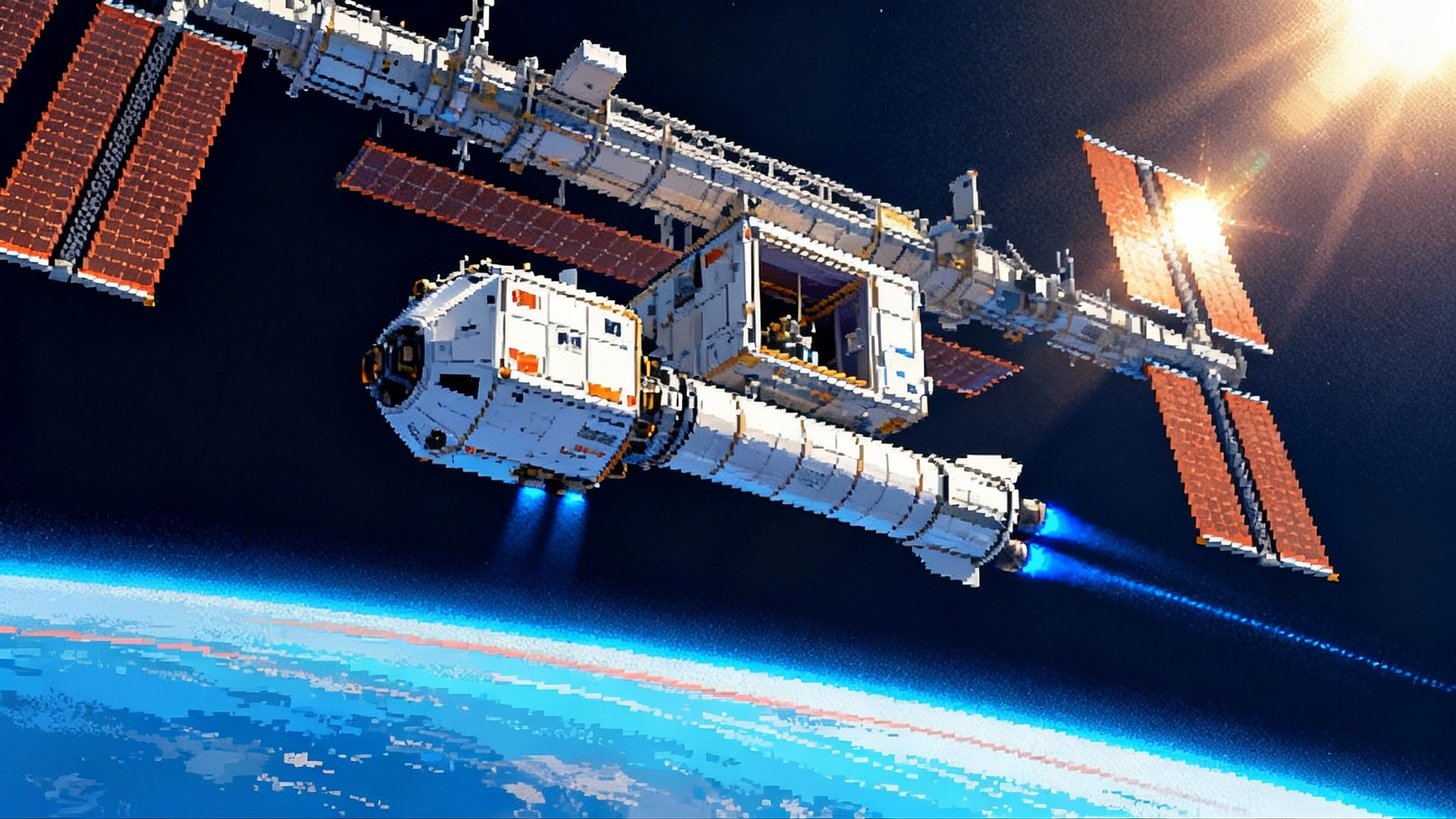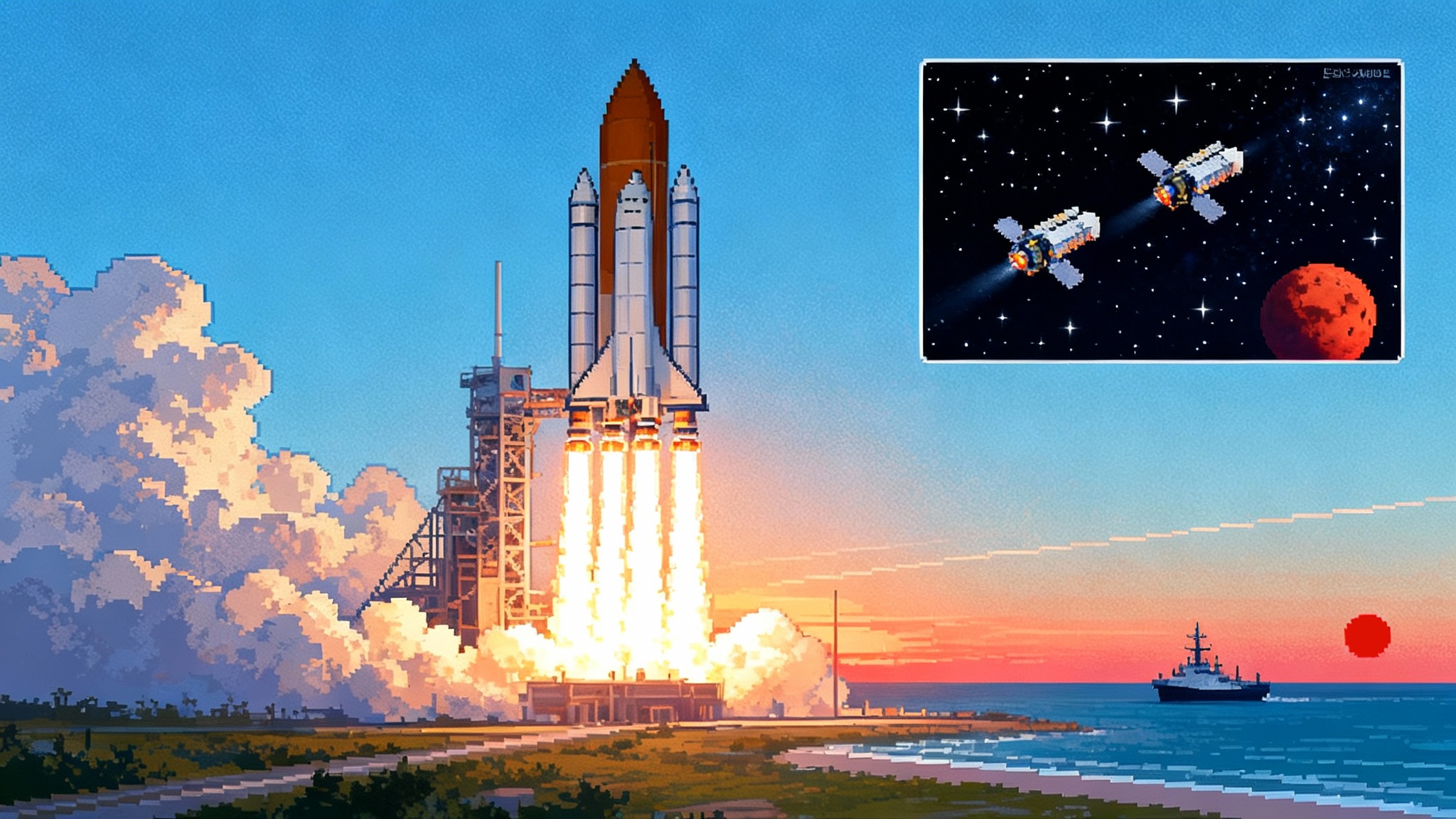New Glenn’s 2nd Flight Shoots for Mars with NASA ESCAPADE on Sept. 29
New Glenn’s second launch is slated to send NASA’s twin ESCAPADE orbiters toward Mars on September 29, 2025. Here is why flying interplanetary so early matters for risk, cost, cadence, and competition in the U.S. launch market.

A brand-new heavy lifter is heading interplanetary
If the launch calendar holds, Blue Origin’s New Glenn will send NASA’s twin ESCAPADE orbiters toward Mars on September 29, 2025, making it the rocket’s first interplanetary mission and only its second launch overall. The schedule is ambitious. Interplanetary shots are never routine, and the rocket is still early in its life. But that is why this flight matters. A brand-new heavy lifter carrying a NASA planetary mission signals a changing launch market that could ripple through how the United States plans science missions, prices risk, and competes for national security payloads. New Glenn’s first outing reached orbit in January, proving the basics. The second aims for Mars, with a date highlighted in a Space.com schedule update.
Blue Origin’s rocket brings a wide fairing, high performance, and a partially reusable first stage. The company will try another drone-ship recovery. Whether the booster sticks the landing or not, NASA’s priority is a precise sendoff for its pair of small spacecraft. The headline is simple: a new entrant is delivering a deep-space payload. The implications are anything but simple.
Why flying interplanetary on flight two is a big deal
Launch reliability grows with cadence. Rockets earn trust by flying, and most agencies prefer a stack of successes before betting a high-value payload. ESCAPADE is unusual for two reasons. First, it is interplanetary on a second flight. Second, it is a pair of small spacecraft under NASA’s SIMPLEx framework, designed to deliver focused science at a fraction of a flagship budget.
That combination changes the risk conversation. A small, relatively low-cost science payload can accept measured launch risk in exchange for schedule opportunity and price. It also fits the physics of a heavy-lift vehicle with generous performance and fairing volume. The rocket is not stressed to the margin, and the payload integration is comparatively simple. For a new launcher, that is a smart pairing.
NASA’s calculus is not reckless. For ESCAPADE, the risk envelope is helped by modest spacecraft mass, a straightforward trans-Mars injection, and the ability to cruise independently once deployed. If the rocket works as designed, two compact orbiters get a fast ticket to Mars with propellant margin for capture and science orbits. If it does not, the loss is painful but does not undermine a decades-long flagship campaign. That is the role small planetary missions were meant to play.
What ESCAPADE will actually measure at Mars
ESCAPADE stands for Escape and Plasma Acceleration and Dynamics Explorers. The science is clean. The two identical orbiters will measure magnetic fields and charged particles around Mars from two vantage points at once, tracking how energy and momentum move from the solar wind into the Martian system and how that energy ultimately drives atmospheric escape. See NASA’s plan in the NASA ESCAPADE overview.
Each orbiter carries a compact suite: a magnetometer to map the local magnetic field, an electrostatic analyzer to count and characterize ions and electrons, and plasma probes to sense ambient charged gas. Two-point measurements let scientists map structure and motion in the magnetosphere the way two microphones help you hear direction and timing, not just volume. That is the upgrade single spacecraft cannot provide.
How the data will deepen MAVEN’s story
If you follow Mars science, you know MAVEN has shaped the modern story of how Mars lost its atmosphere. MAVEN has documented how the solar wind and solar storms buffet the planet, driving gas from the upper atmosphere into space. ESCAPADE complements MAVEN by watching the same processes at two points simultaneously, including dynamic boundaries such as the magnetosheath and magnetotail. The goal is to connect cause and effect within minutes, not infer it statistically over months.
This two-point approach aligns with heliophysics work that connects solar drivers to planetary responses. For context on the larger Sun-planet system, see our look at the IMAP mission to L1 and how it will map the heliosphere’s edge, and how improved forecasting is being built atop datasets like the Parker Probe’s 25th flyby.
Risk, cost, cadence: what this flight tells us about the market
A second-flight interplanetary mission is a reputational high-wire act. If it works, Blue Origin demonstrates performance on a deep-space trajectory, not just to low Earth orbit, which elevates confidence quickly. Success would also show that partial reusability and heavy-lift design can support planetary windows on a schedule that helps science, not just commercial broadband.
On cost, the SIMPLEx approach that produced ESCAPADE aims to keep totals far beneath flagships. Launch is a significant line item, but heavy-lift rockets can sometimes offer attractive pricing for small payloads, especially if the schedule aligns with the provider’s needs. In a market where rockets and customers both benefit from early cadence, a planetary smallsat can fill a flight that proves out a vehicle while the science community gets a direct trip to its target. That symbiosis trims time and dollars for both sides.
Cadence matters most. Planetary windows are unforgiving. Miss one and you wait roughly 26 months. A provider that can hit those beats regularly can entice mission proposers to plan around it. The result could be more small, sharply focused missions to targets that previously required a flagship to justify the ride.
National security launch competition gets a new plot twist
The U.S. Space Force splits procurement into lanes to encourage competition while guarding the most demanding missions. Blue Origin has been cleared to compete and has already secured work in the tougher lane that requires high performance and rigorous mission assurance. A successful ESCAPADE launch will not directly certify New Glenn for a specific national security orbit, but it will showcase stage performance, ground operations, and upper stage restarts under real mission pressure. All of those matter to customers who assign billion-dollar payloads.
SpaceX and United Launch Alliance are the incumbents. Adding a third heavy-lift provider with a large fairing and high payload mass to orbit changes tactical choices. Intelligence payloads bound for high energy or unusual orbits value performance margin. Weather risk at the Cape favors multiple launchers to keep schedules on track. In procurement terms, credible competition can reduce price pressure and increase resilience.
What success would unlock for planetary smallsats
ESCAPADE is not the first small spacecraft to venture deep into the solar system, but it is a standard-bearer for a model that can scale. Smaller form factors can be built and iterated faster. Instrument suites can be tuned to single questions. Costs can be contained by reusing buses and subsystems across multiple missions. For a taste of how rapid, targeted science pays off, see how Juno captures Io eruption.
Expect a few trends if this flight hits its marks:
- More paired or clustered spacecraft. Two or three identical orbiters can map boundaries and flows in ways a single craft cannot.
- Greater use of common smallsat buses. Standardization reduces non-recurring engineering across multiple destinations.
- Tighter integration with space weather science. Heliophysics and planetary teams will time measurements to capture how solar storms and high speed streams change planetary atmospheres in real time.
What to watch on launch day and beyond
On the pad, expect a long countdown and careful conditioning of cryogenic propellants. The size and complexity of heavy-lift vehicles make methodical procedures normal. The fairing is spacious. Two small orbiters sit comfortably inside, with deployment hardware built to separate them cleanly before cruise.
At ascent, the milestones are standard: first stage throttle, stage separation, and upper stage ignition. For an interplanetary trajectory, the upper stage may need multiple burns to time the release precisely and shape the departure. Any planned relight of the upper stage will be scrutinized. These restarts are as much about proving deep-space capability as they are about ESCAPADE itself. If Blue Origin tries another drone-ship recovery, that is a sideshow for science but a useful datapoint for the rocket’s long-term economics.
Post-deployment, the twin orbiters will check out, unfold booms, and begin cruise operations. The real mission starts at Mars, where each will enter a highly elliptical orbit and then spend months adjusting altitude and phasing to set up coordinated science. The reward is a dataset that captures the Martian system in stereo.
The bigger picture
For NASA, this is a pragmatic bet that a new heavy-lift option can open more doors. For Blue Origin, it is a chance to graduate from demonstration to delivery in a high-visibility domain where performance is measured in kilometers per second and seconds of timing, not just kilograms to low Earth orbit. For the U.S. launch market, it is a signal that real competition is arriving in the lanes that matter most for national security and science.
ESCAPADE’s science is the quiet winner. Two small orbiters, working in tandem, will give Mars researchers the time-resolved, two-point measurements they need to link solar drivers to atmospheric escape. That is how you turn a decade of compelling single-point observations into a causal story backed by simultaneous data. If New Glenn does its job on September 29, the rest is up to the spacecraft and the Sun.








